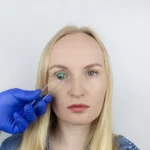
What to do when you notice stained teeth?
There are a couple of things you should know about stained teeth and discoloration. In some cases, the condition can be fixed in no time, but there are others that will require a bit of time.
You should also know that cosmetic dentistry can help you with it as well, and there are various procedures that can help you get pearly whites.
Naturally, the only way to know more about the process is to look for a professional opinion.
Here is all you need to know about stained teeth, possible causes, and ways to reverse the process of discoloration.
Can Teeth Get Stained?
For those wondering whether teeth can get stained, the short answer is yes. As people grow older, teeth change color. And it is not rare to see this change.
Especially for older people. But there are so many different factors that can affect teeth color.
Some staining can be a sign of a serious problem, but there are other types that are neither damaging nor problematic. And it is essential for you to know the difference.
Naturally, based on the type of staining, you might need to visit your dentist and undergo a dental procedure.
What Causes Stained Teeth?
There are several possible reasons why teeth might get stained. And to understand this, you will need to know more about the types of stains.
The first type is called extrinsic stains, and these stains affect the surface of the tooth. The reason why these stains appear is because of foods and drinks. People who regularly drink coffee or tea, for example, might notice discoloration of their teeth.
The same thing applies to those that use tobacco-based products. And in the majority of cases, it is not problematic.
The second type, intrinsic stains, is something that appears below the surface of the tooth.
As stain particles attach to the tooth, they will work their way through the protective layer, and this will allow them to accumulate within the enamel. These stains are not as easy to remove, and they are often caused by extensive use of fluoride.
Finally, we have stains that are related to age, and these stains are often a combination of the previous two types. With age, the dentin will become yellowish, and the enamel will get thinner. It is a natural process, and it affects many people.
Potential Complications
While diet will play an important role in discoloration, it is also possible that these stains are a side-effect of another condition. Trauma can sometimes lead to tooth discoloration, and the same thing applies to cavities.
People that had a root canal treatment will notice that the treated tooth is changing its color. And it is perfectly normal. Since the nerve is removed, the tooth won’t be able to get the necessary nutrients and will darken in time.
It is also worth mentioning that discoloration can be caused by cavities since the tooth is damaged from the inside.
Cavities can cause irreparable damage to the tooth, which is one of many reasons why you should talk to your dentist as soon as you notice any type of change.
Is There a Way To Treat It?
By now, you are probably wondering whether there is a way to treat staining. And the answer is yes. But the process will mostly depend on the type of staining. If you have stained teeth from foods and drinks, whitening them can be quite simple.
In the majority of cases, you will be able to use whitening toothpaste and regular dental cleaning methods. Brushing your teeth regularly can also help, as with anything else that can improve your oral hygiene.
Needless to say, making changes in your diet will also play an important role in whitening. For example, if you eliminate teeth-staining foods and drinks, you will notice that your teeth will whiten in no time.
These include coffee, tea, wine, and anything else that can change the color of your teeth. You can also try chewing gums and strong mints, and other products that can remove stains. But if there is an underlying condition, you will need to address it first.
For example, discoloration caused by trauma or cavities will require a dental procedure. Restorative dentistry will do a great job of fixing your teeth, and after that, all you need to do is focus on maintaining your oral health.
Home Remedies
Home remedies can be effective for surface staining, and there are plenty of products you can find. The most important thing is that you talk to your dentist and inform them of all the products you are using.
They will be able to provide more info, recommend specific products, or tell you what to do to improve results.
Whatever you decide to do, inform your dentist about all the details. There might be a reason why you shouldn’t use a specific product, or they will tell you if there is a better alternative.
What To Do?
The first thing you will need to do is schedule a visit to your dentist. It is the only way to fully understand the severity of the problem.
Additionally, your dentist will be able to tell you which products will be effective, and guide you through the entire process.
You can also get professional teeth whitening, which will last for a longer period of time and will have a better result. Needless to say, if there is an underlying problem such as cavities, they will be able to remove them and fix the tooth.
It is crucial to solve any underlying problems before you proceed to the whitening. Cosmetic dentistry can also help with discoloration, and you can always get veneers or new crowns. But before you are able to decide what the best option is, you will need to pay your dentist a visit.
About The Author:
Gilbert D. Curtis, DDS, is an associate professor at the University of Connecticut School of Dental Medicine. He teaches both the undergraduate Doctor of Dental Medicine curriculum and the Advanced Education General Dentistry Residency.




